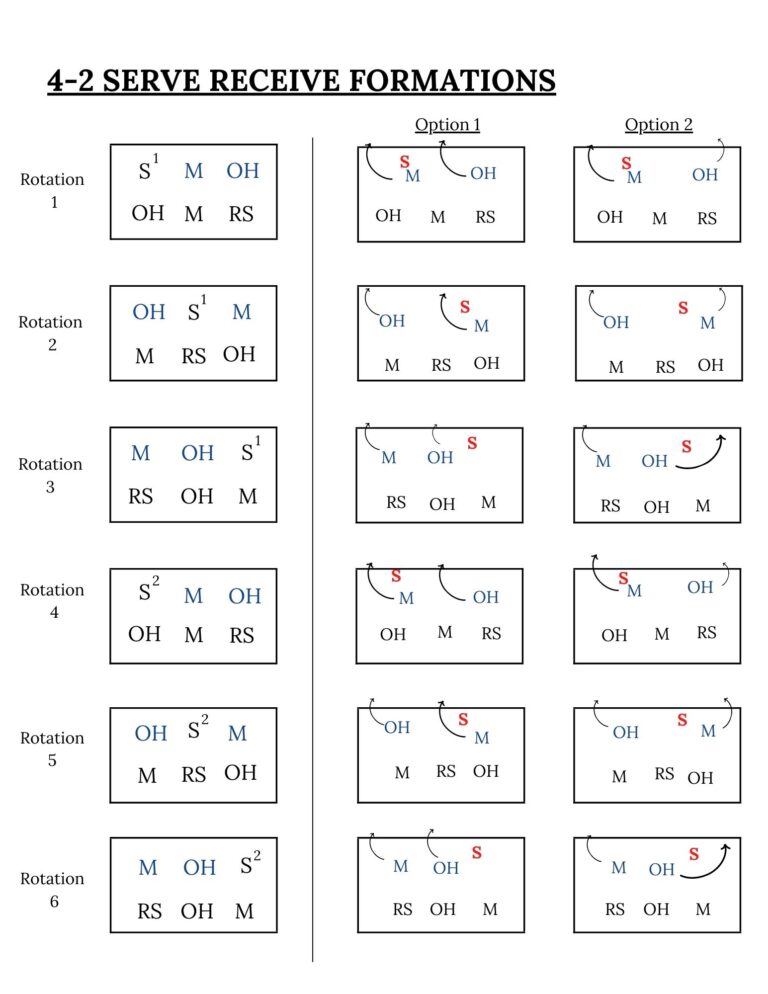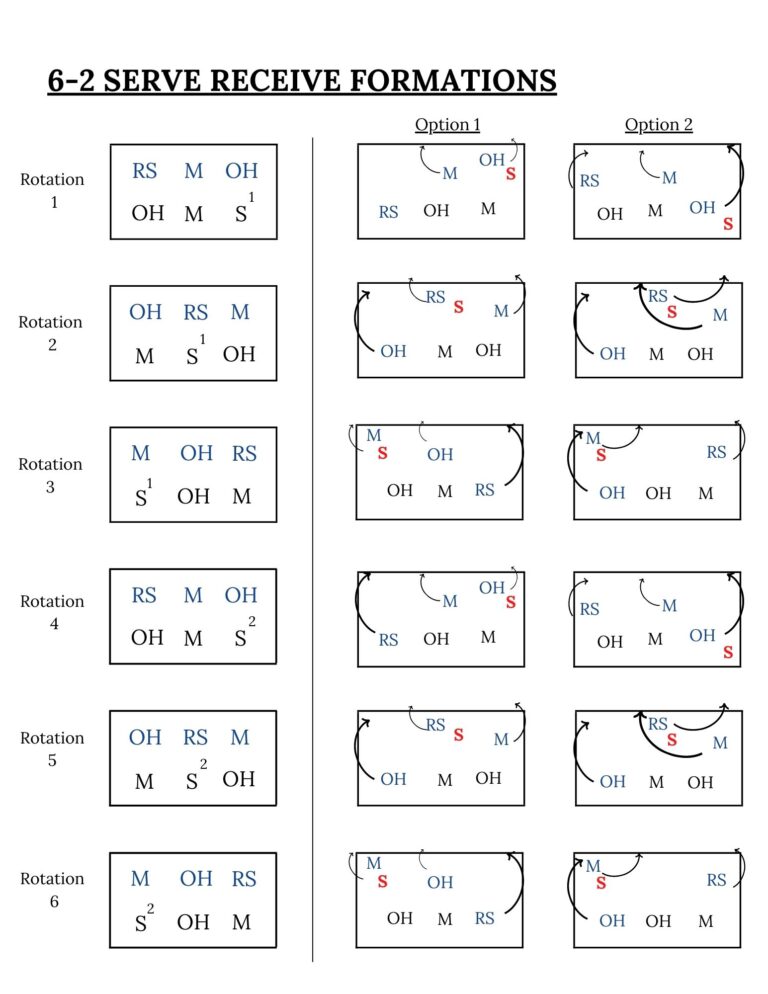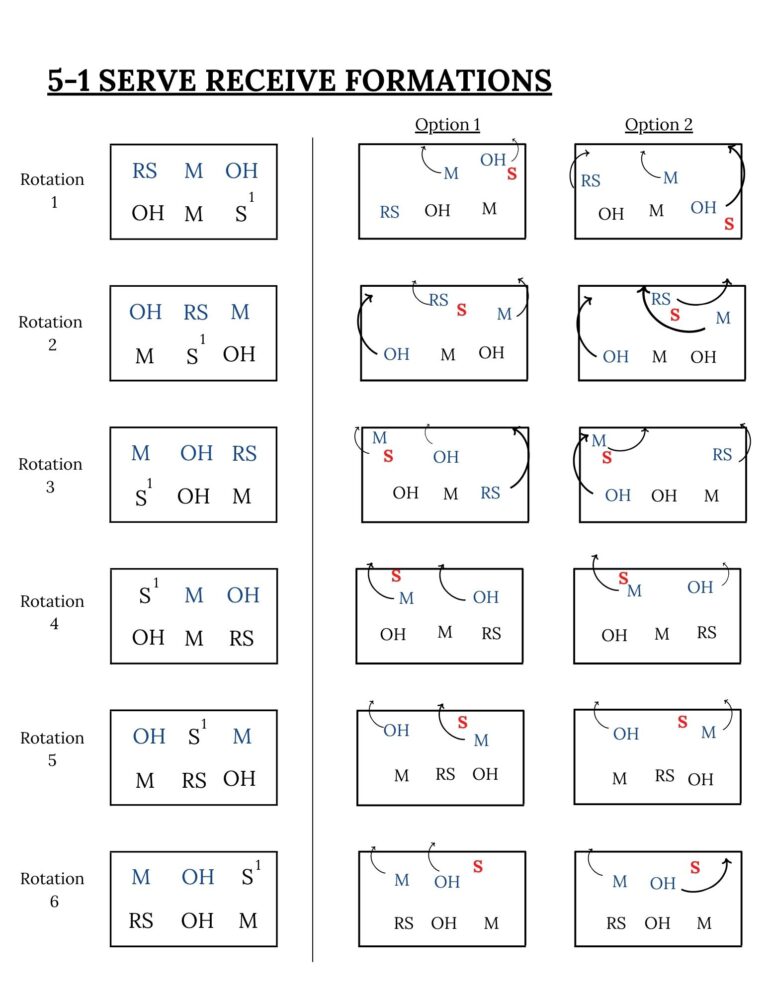Diagrams of Serve-Receive Rotations
(4-2, 6-2, 5-1, & 5-2)
With volleyball rotations, players must rotate their starting position on the court in a clock-wise direction every time their team sides-out (wins the point when the other team served).
Throughout a game, players will start in six different locations, and will be in the front row for half the time and in the back row for the other half.
This means that a team will be receiving serve in six different formations throughout the match.
Overlap Rule
Players must be in their correct rotational starting positions each time before the ball is served. After the ball is contacted, players can go anywhere on the court.
Rotational starting positions are not set locations on the court, but rather how the players must be set up relationally to each other.
This is most noticeable when the setter is coming from the back row, as they need a clear path to the passing location without interrupting the receivers’ line-of-vision.
Ex. Players in the “front row” can pull back and pass in serve receive, as long as they are still in front of the people they need to be in front of, still to the left of the person they need to be left of, etc.
Rotation 1
Rotation 1 is when the primary setter starts in the 1 spot (right back). When keeping statistics, it is necessary to keep this as a constant.
Serve Receive Formation Principles
-
- Get the setter to the setter spot without disrupting the receivers
- Less seams usually mean less miscommunication
- Try to have your best passer be in the middle/take up more of the court
- Always have a player hitting outside
- Have at least two options for each serve receive formation
Serve Receive Formations for a 4-2
Two setters, opposite from each other, who are both setting from the front row.
Serve receive formations are relatively simple, as the setter can stay along the net and move to the passing location with ease. It is the same pattern of formations for each setter.

Serve Receive Formations for a 6-2
Two setters, opposite from each other, who are both setting from the back row.
Serve receive formations are relatively complicated, as there should be a replacement receiver for the setter (a front row player pulling back), and the setter must get to the passing location while stacking behind another player.
It is the same pattern of formations for each setter.

Serve Receive Formations for a 5-1
One setter, who sets all the way around, from both the front and back row.
Serve receive formations are relatively straightforward, as they are a combination of a 4-2 and a 6-2.
There is the different pattern of formations for each rotation.

Serve Receive Formations for a 5-2
Two setters, with one of them setting in the front row and the other setting in the back row. They sub in for each other and share the position.
Serve receive formations are relatively straightforward, as one setter has the serve receive formations of a 4-2 and the other has the serve receive formations of a 6-2.

